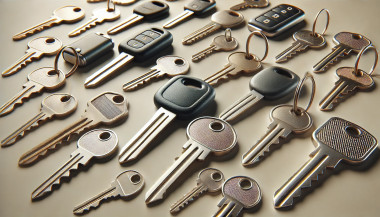Car remotes have become an essential part of modern vehicle ownership, offering convenience and added security. However, when they stop working, it can lead to frustration and delays. If you’ve ever faced a malfunctioning car remote, don’t worry—you’re not alone. Here’s a guide to help you understand the common reasons why your car remote might fail and how you can fix the issue quickly and affordably.
1. Dead Battery: The Usual Suspect
One of the most common reasons for a non-functional car remote is a dead battery. Over time, the small coin batteries in your remote lose their charge, making the remote unusable.
- Signs of a Dead Battery: Reduced range, inconsistent functionality, or complete failure to respond.
- How to Fix It: Replace the battery with a compatible CR-type coin battery. Check your car manual or the remote’s casing for the correct battery type.
- Pro Tip: Always keep a spare battery in your glove compartment to avoid getting stranded.
2. Signal Interference: The Invisible Barrier
Signal interference can block communication between your remote and your car. This can happen in areas with high electromagnetic activity or if the remote’s signal is weakened.
- Common Causes: Proximity to cell towers, Wi-Fi routers, or even other key fobs.
- How to Resolve It:
- Move closer to your car and try again.
- Change your location if you’re in a crowded parking area.
- Keep your remote away from other electronic devices that might cause interference.
- Prevention Tip: Avoid storing your car remote near electronics when not in use.
3. Remote Needs Reprogramming
Sometimes, a car remote loses its programming, which is essential for communicating with your car. This can happen after battery replacement, electrical system resets, or software glitches.
- Signs Your Remote Needs Reprogramming: The buttons don’t respond, or the remote only works intermittently.
- What You Can Do:
- Check your car manual for DIY reprogramming instructions.
- If DIY methods fail, consult a professional locksmith or your car dealer for assistance.
- Pro Tip: Always reprogram your remote immediately after replacing its battery to avoid compatibility issues.
4. Physical Damage: More Than Just Wear and Tear
Daily use, accidental drops, or exposure to moisture can damage your car remote, leading to malfunction. The internal components, such as the circuit board, are particularly sensitive.
- Signs of Damage: Cracks on the casing, loose buttons, or water ingress.
- How to Address It:
- For minor issues, replace the remote casing or repair loose buttons.
- If the circuit board is damaged, you’ll need a replacement remote.
- Preventative Measures:
- Use a protective key cover to shield your remote from damage.
- Keep your remote away from water and extreme temperatures.
5. Faulty Car Receiver: The Problem Isn’t Always the Remote
In some cases, the issue lies with your car’s receiver rather than the remote. If the receiver is damaged or malfunctioning, it won’t recognize signals from the remote.
- How to Diagnose:
- If multiple remotes fail to work with the same car, the receiver might be the issue.
- Test your remote on a similar vehicle, if possible, to rule out the remote as the problem.
- How to Fix It: Consult a professional mechanic to inspect and repair the car’s receiver system.
General Tips to Keep Your Car Remote Functional
Prevention is better than cure, especially when it comes to car remotes. Here are some tips to avoid future issues:
- Regular Maintenance: Inspect your remote periodically for wear and tear.
- Store It Safely: Keep your remote in a safe, dry place to avoid accidental damage.
- Backup Plan: Always have a spare key or remote handy for emergencies.
- Invest in a Tracker: Attach a Bluetooth tracker to your remote for easy location if it gets misplaced.
When to Seek Professional Help
While many car remote issues can be resolved with DIY methods, some problems require professional assistance. If your remote still doesn’t work after troubleshooting, consult a locksmith or an automotive specialist. They can help with repairs, replacements, and reprogramming at an affordable cost.
Don’t Let a Faulty Remote Slow You Down
A malfunctioning car remote can be a hassle, but most issues are fixable with a little know-how. Whether it’s a dead battery, signal interference, or physical damage, understanding the root cause will help you resolve the problem efficiently. With proper care and maintenance, your car remote will continue to offer the convenience and security you rely on every day.

 (1)_1736249411.jpg)

_1736344198.jpg)
_1752144685.jpeg)
 (1)_1736347611.jpg)